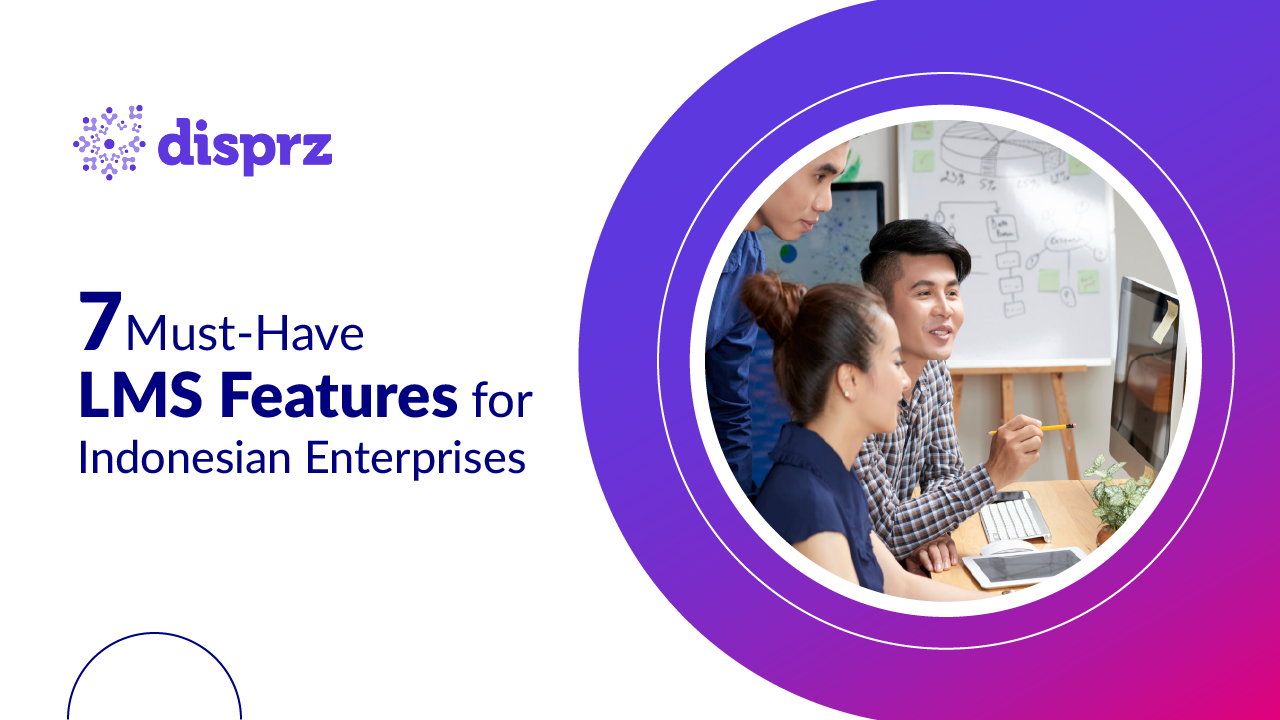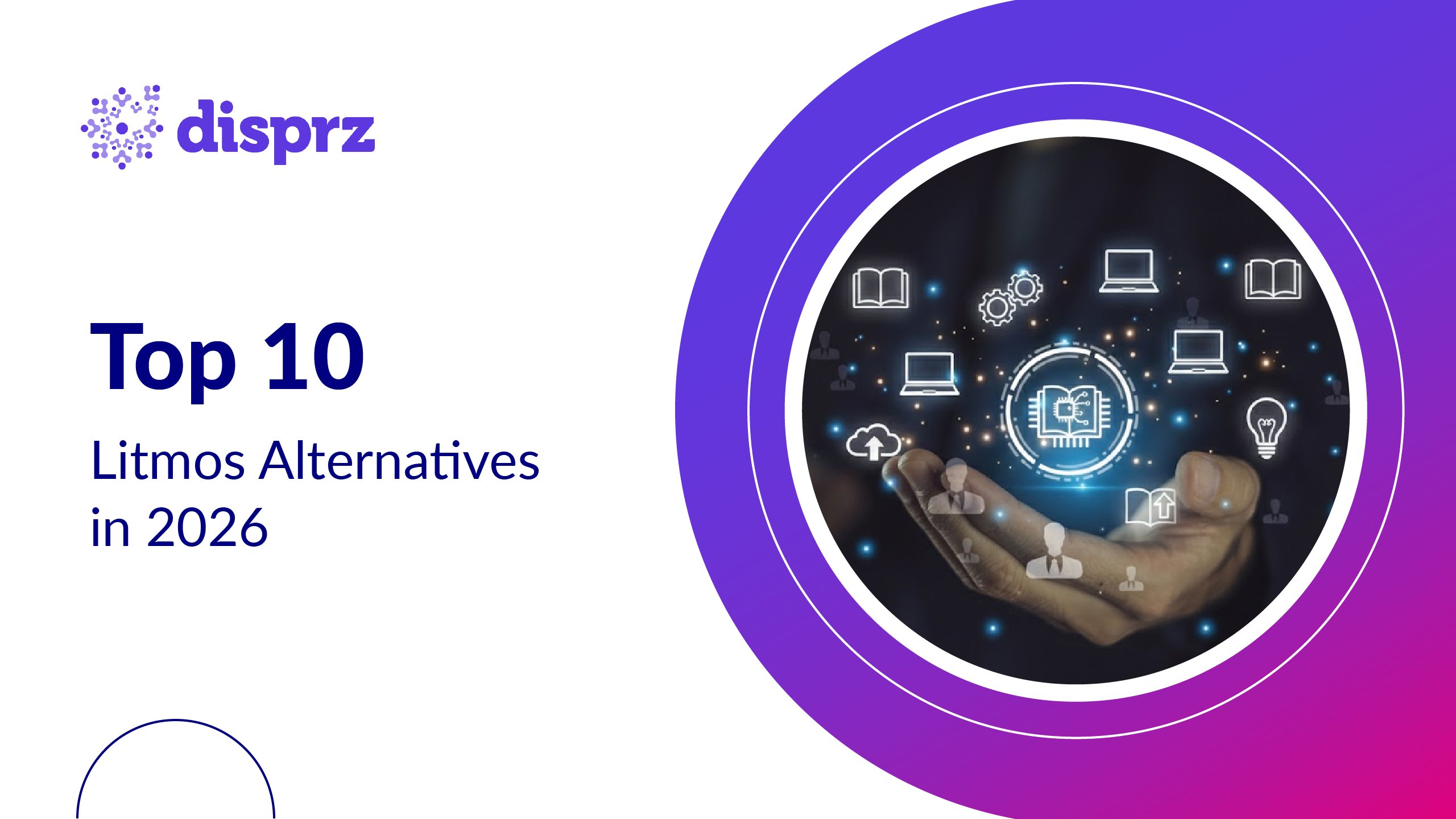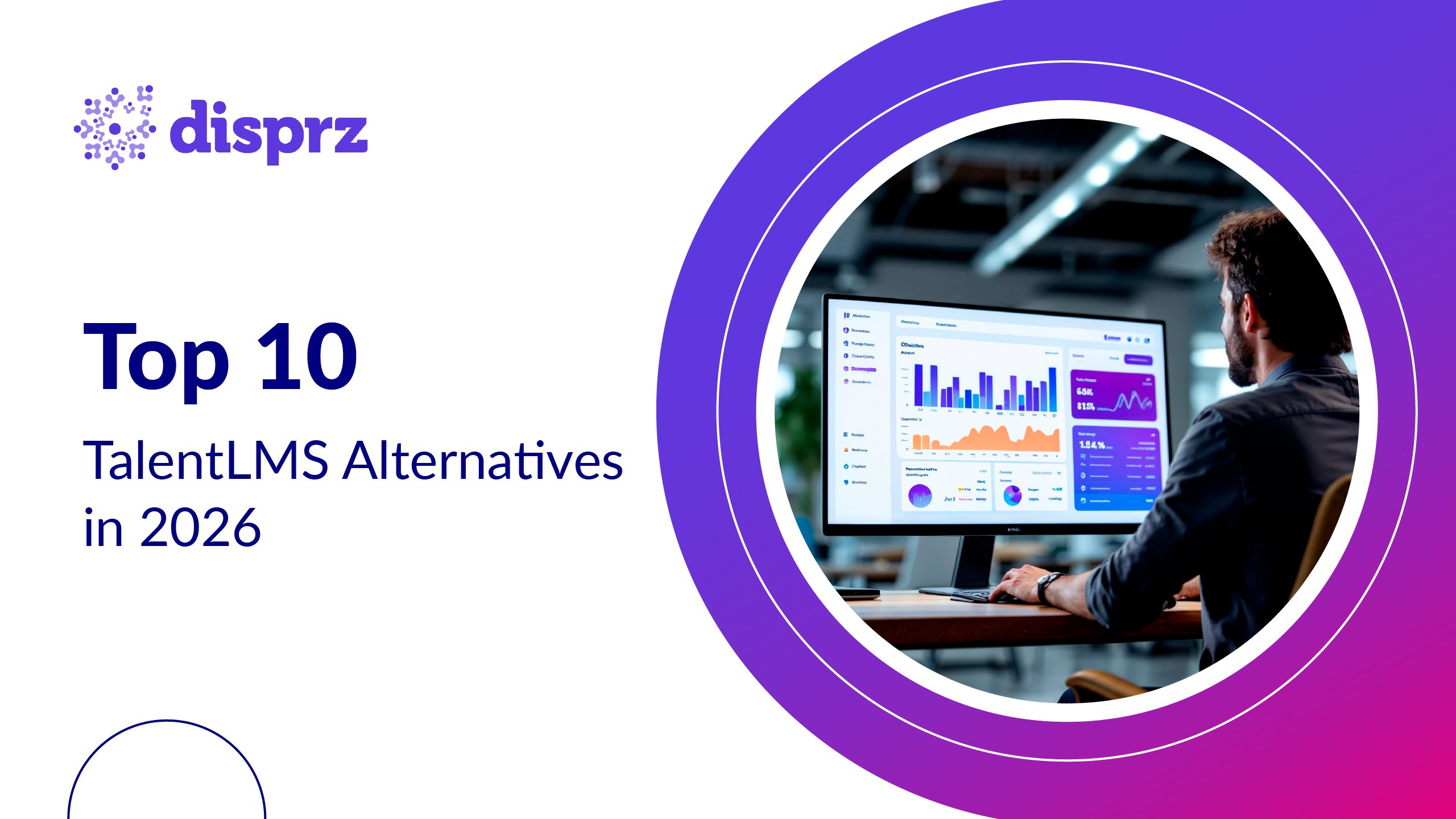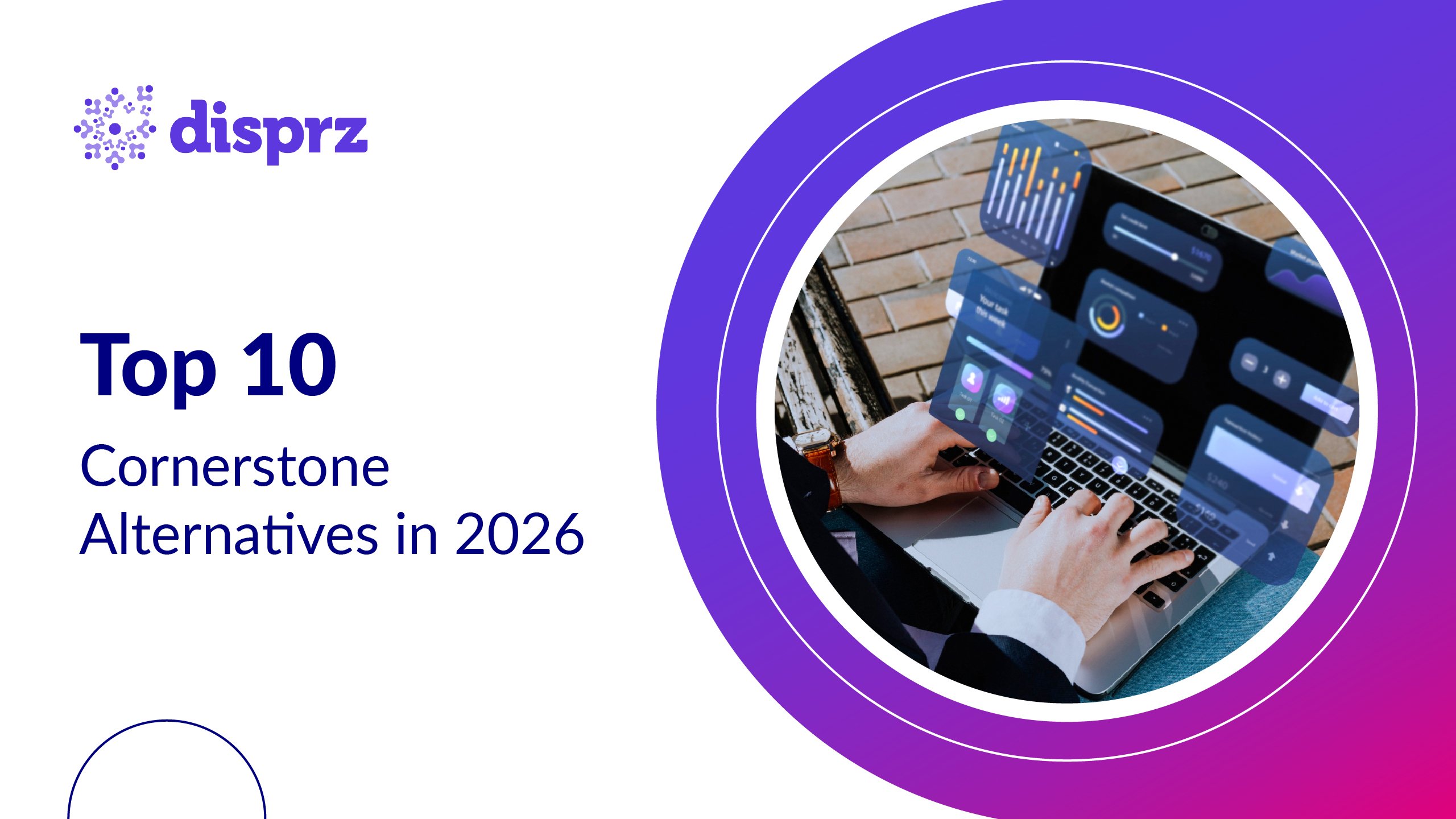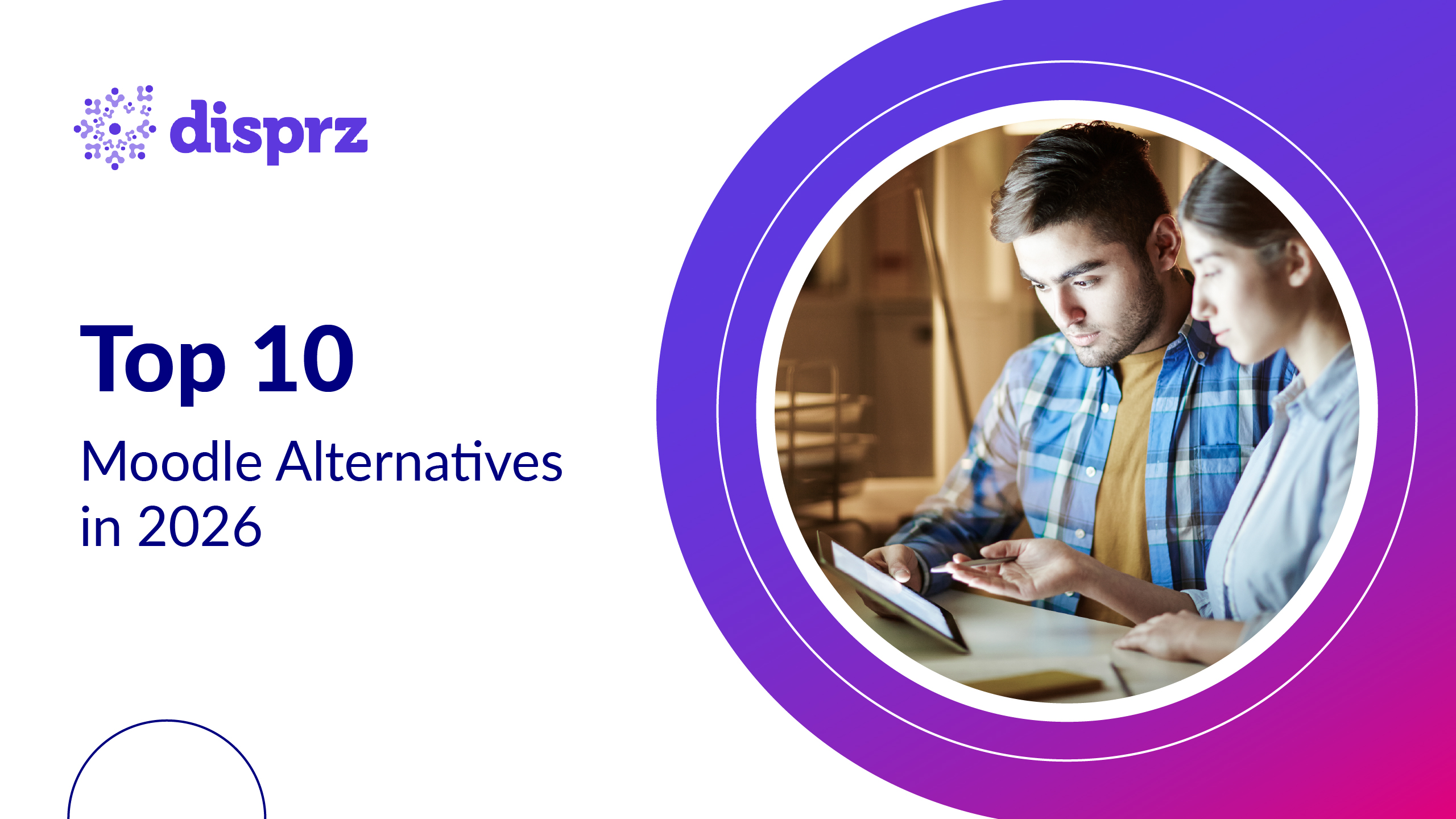The adoption of learning management systems in Indonesia is accelerating as enterprises recognize the need to build future-ready workforces. With government-backed digital transformation initiatives, such as “Making Indonesia 4.0,” and the rise of hybrid work models, organizations are increasingly turning to digital platforms to deliver structured, engaging, and compliant training. Whether it’s frontline retail staff, knowledge workers in financial services, or manufacturing teams in remote regions, organizations are realizing that a modern employee training software can close skill gaps faster and more effectively than traditional methods.
This growth is also driven by Indonesia’s youthful workforce, many of whom are digital natives. They expect learning to be mobile-first, interactive, and personalized, making outdated, one-size-fits-all systems inadequate. For businesses, this means that investing in the right LMS features in Indonesia is not just about operational efficiency but also about employee engagement and retention. Modern, AI-driven LMS platforms like Disprz are already helping Indonesian enterprises engage their digital-native workforce through mobile-first, localized, and adaptive learning.
However, choosing the right LMS goes far beyond comparing vendors or features on paper. Organizations must evaluate how well a platform aligns with long-term business objectives; whether it ensures compliance with labor laws, supports blended learning in Indonesia (a mix of instructor-led and digital training), or scales seamlessly as the organization grows. In 2025, the right LMS should not merely host courses but actively drive outcomes through data, AI-driven personalization, and compliance-ready reporting. Enterprises that make the right choice today will build a resilient learning culture that translates into stronger business performance tomorrow.
Why LMS Selection Matters in Indonesia (2025 Perspective)
The Indonesian business landscape in 2025 is being reshaped by rapid digitalization, evolving workforce expectations, and stricter regulations across industries. Organizations are under pressure not just to train employees but to ensure that learning contributes directly to compliance, productivity, and long-term competitiveness. Selecting the right learning management system in Indonesia therefore goes far beyond comparing vendors; it’s about finding a solution aligned with regulatory demands, cultural realities, and business scalability.
Compliance & Regulatory Needs
Indonesia’s labor laws and industry-specific regulations, especially in sectors such as finance, healthcare, and manufacturing, require organizations to maintain accurate records of employee training. An LMS must provide audit-ready reports, certification tracking, and compliance dashboards that prove adherence to policies. Without these features, businesses risk penalties, operational delays, and reputational damage. By automating compliance reporting, organizations can save significant administrative time while ensuring peace of mind.
Supporting Blended Learning in Indonesia
Many Indonesian organizations still rely heavily on classroom-based training, particularly in industries with hands-on roles. However, the shift to digital learning is accelerating, driven by remote work trends and the need for scale. An ideal LMS should bridge both worlds, offering virtual classrooms, ILT scheduling, and e-learning modules. This hybrid model ensures learning remains accessible across geographies, from urban centers to rural regions, while supporting different learning styles.
Scalability for SMEs and Large Corporates
Indonesia is home to both rapidly growing SMEs and large conglomerates with thousands of employees. An LMS should be flexible enough to serve both ends of the spectrum; affordable and easy to deploy for smaller businesses, yet powerful enough to handle complex workflows for enterprises. Features such as modular pricing, cloud-based infrastructure, and multi-tenant capabilities ensure the platform grows alongside the organization without compromising performance or user experience.
7 Key LMS Features Indonesian Enterprises Should Prioritize
Choosing the right LMS features in Indonesia is critical to ensure employee learning translates into measurable results. From localization to compliance, every feature should address real business challenges while aligning with cultural and regulatory needs.
Below are the seven must-have capabilities that will define the effectiveness of any employee training software in 2025.
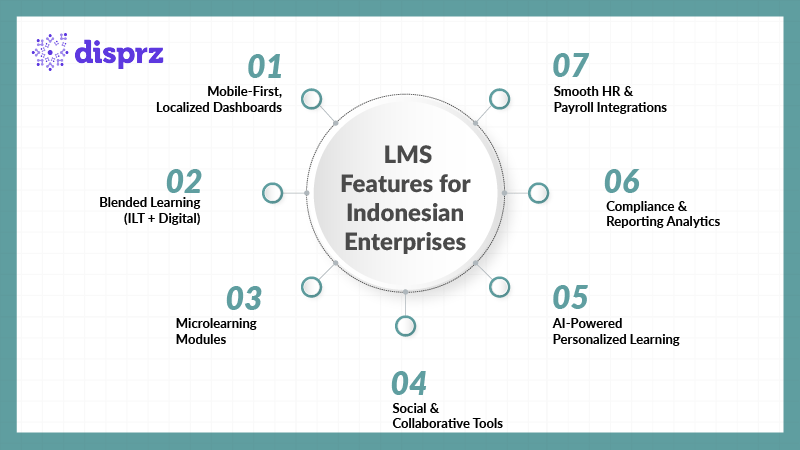
1) Intuitive, Localized Dashboards
A modern LMS must prioritize usability, offering clean and intuitive dashboards accessible on mobile devices. In Indonesia, mobile-first design is essential since a large share of the workforce relies on smartphones. Support for Bahasa, easy navigation, and role-based dashboards help employees quickly access relevant courses, boosting adoption and reducing the learning curve.
2) Blended Learning Enablement
Organizations should choose an LMS that blends instructor-led training (ILT) with digital modules. This supports Indonesia’s traditional classroom-oriented culture while gradually shifting toward digital-first learning. Features such as virtual classrooms, scheduling tools, and attendance tracking ensure smooth integration of offline and online learning. This balance improves flexibility and scalability for businesses.
3) Microlearning Modules
Bite-sized lessons are crucial for employees with limited time, especially frontline and deskless workers. An LMS that enables structured microlearning allows employees to learn in short bursts, improving retention and reducing cognitive overload. Gamified quizzes, quick videos, and scenario-based content can make learning engaging while ensuring knowledge application on the job.
4) Social & Collaborative Learning
Indonesian workplaces thrive on collaboration, making peer-to-peer learning vital. Features such as discussion forums, group challenges, and knowledge-sharing boards create interactive learning environments. Collaborative tools foster teamwork, while leaderboards and recognition features build healthy competition, boosting overall participation and knowledge retention across teams.
5) AI-Driven Personalization
AI-powered LMS platforms can analyze learner data to recommend tailored courses and career pathways. In Indonesia’s diverse workforce, this ensures employees get content relevant to their role, skill gaps, and growth aspirations. Personalized nudges and adaptive learning paths also increase engagement, ensuring training aligns with both business objectives and employee development goals.
6) Reporting & Compliance Analytics
Regulatory compliance is a top concern for Indonesian enterprises, especially in sectors such as finance and manufacturing. An LMS must provide robust analytics to track completion rates, readiness scores, and compliance certifications. Automated reports and visual dashboards save HR and L&D teams time while ensuring organizations remain audit-ready and risk-free.
7) Seamless HR & Payroll Integrations
Integrations with HRIS, payroll, and performance management systems reduce manual work and data silos. This ensures training records sync automatically with employee data, enabling smooth tracking of performance, skills, and pay-linked learning outcomes. For enterprises scaling quickly, these integrations drive efficiency and align learning with overall workforce management.
Common LMS Challenges in Indonesia & How to Solve Them
While the adoption of LMS in Indonesia is on the rise, organizations still face unique challenges when rolling out digital learning at scale. Connectivity gaps, cultural diversity, and employee readiness often create hurdles that slow down adoption. However, with the right strategy and LMS features, these challenges can be turned into opportunities for stronger engagement and long-term success.
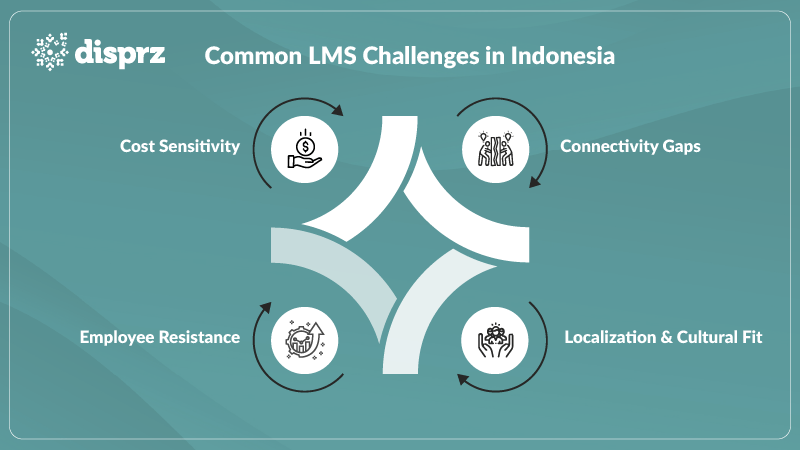
Connectivity Gaps: Reaching Learners Everywhere
Indonesia’s geographic spread and infrastructure disparities mean that internet reliability can vary greatly between regions. An LMS must therefore offer offline access, mobile-first learning, and lightweight modules that work even on low bandwidth. This ensures that frontline employees and remote workers can continue learning without disruption. Organizations can also schedule blended sessions to balance digital and in-person training.
Localization & Cultural Alignment: Making Learning Relevant
A successful LMS in Indonesia should go beyond translation; it must integrate Bahasa, local examples, and culturally relevant case studies. This not only improves comprehension but also boosts relatability and engagement. Platforms that allow regional customization and storytelling resonate better with Indonesian learners, creating stronger adoption across diverse teams.
Employee Resistance to Digital Tools: Driving Change Smoothly
Employees used to traditional training may resist new digital methods. To overcome this, organizations should implement gamification, reward systems, and leadership-driven learning campaigns. When managers champion digital adoption and employees see personal benefits (such as career growth and convenience), resistance decreases and motivation to engage rises.
Cost Sensitivity: Balancing Budget & Value
SMEs and even larger enterprises in Indonesia often operate with limited training budgets. Choosing an LMS with flexible pricing models, modular rollouts, and scalable features helps businesses invest gradually without overburdening finances. Starting small with essential features and expanding as needs grow ensures affordability while maintaining impact. To see which modern LMS options align with these features, check out our guide on the top LMS platforms in Indonesia with Bahasa support.
Case Studies & Measured Outcomes
Real-world success stories demonstrate how the right LMS features in Indonesia can solve diverse challenges; from rapid onboarding in SMEs to strict compliance in highly regulated industries. These examples highlight the measurable impact of modern employee training software, proving that the right platform drives both efficiency and business growth.
SME Story: Building Workforce Readiness in Retail
A mid-sized retail SME in Jakarta faced challenges onboarding frontline employees quickly across multiple outlets. Traditional classroom sessions were costly and time-consuming, leading to inconsistent knowledge transfer. By adopting a mobile-first learning management system in Indonesia, the organization delivered short, localized microlearning modules directly to employees’ smartphones. Within months, onboarding time reduced by 70%, and managers reported higher service consistency. Employee satisfaction scores also improved as staff felt better equipped to handle customers on day one.
Enterprise Story: Achieving Compliance in Financial Services
A large financial enterprise in Indonesia struggled with strict regulatory audits and the need to keep staff updated on ever-changing compliance requirements. By implementing an LMS with robust reporting and compliance analytics, the organization ensured that training completions were tracked in real-time and that audit trails were always available. This resulted in 100% audit readiness and a 40% increase in training completion rates. The organization also noticed a significant decline in compliance-related errors, saving both time and resources.
Measured Outcomes Across Businesses
Across both SMEs and corporates, the impact of employee training software was clear: faster onboarding, better compliance, higher engagement, and measurable return-on-investment (ROI). Organizations not only saved costs but also created a culture of continuous, blended learning in Indonesia, enabling employees to upskill at their own pace. This approach improved knowledge retention, encouraged collaboration across teams, and set a strong foundation for future workforce resilience, positioning companies to adapt quickly to evolving market demands and technological advancements.
Conclusion
In 2025, Indonesian enterprises must look beyond traditional training systems and focus on the 7 must-have LMS features; intuitive localized dashboards, blended learning support, microlearning modules, collaborative tools, AI-driven personalization, compliance analytics, and seamless integrations with HR systems. These capabilities are not just “good to have”; they are essential for ensuring learning is impactful, scalable, and aligned with both regulatory and business goals.
The right learning management system in Indonesia empowers organizations to upskill employees faster, meet compliance requirements effortlessly, and create a culture of continuous learning. Whether you are a growing SME or a large enterprise, the right LMS transforms employee training software into a strategic asset; improving engagement, reducing training costs, and preparing the workforce for the future.
Choosing the right LMS features can define your learning success. See how Disprz LMS empowers organizations across Indonesia to train smarter, faster, and at scale.
FAQs
1) What LMS features improve ROI in Indonesia?
Key features such as microlearning, AI-driven personalization, and detailed analytics directly improve employee performance and reduce training costs. By making learning engaging and relevant, these features increase completion rates and retention. Over time, this translates into measurable ROI through productivity gains and reduced compliance risks.
2) Which LMS helps with compliance in Indonesia?
Enterprises should choose an LMS with robust reporting and compliance analytics that track completions, readiness scores, and audit trails. Such systems ensure adherence to Indonesia’s labor laws and industry regulations. This not only safeguards business continuity but also reduces penalties during audits.
3) How does LMS support blended learning locally?
An effective learning management system in Indonesia combines instructor-led training with digital modules in a single platform. Employees can attend classroom sessions while also accessing self-paced learning anytime, anywhere. This hybrid approach is especially useful for organizations operating across diverse geographies.
4) What’s the cost of implementing LMS in Indonesia?
The cost depends on the size of the workforce, chosen features, and the vendor’s pricing model. SMEs can adopt cost-effective, modular solutions, while larger corporations may invest in enterprise-grade platforms with advanced integrations. Many LMS providers also offer flexible subscription models to fit budgets.
5) Is LMS adoption difficult for SMEs in Indonesia?
LMS adoption is now much easier for SMEs due to mobile-first platforms with localized interfaces in Bahasa. These systems require minimal IT infrastructure and are designed for fast rollout. With intuitive dashboards and simple workflows, SMEs can quickly onboard employees and see value without disruption.



